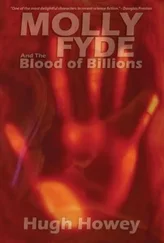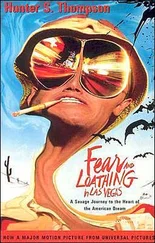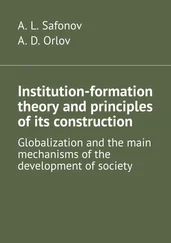As the story progresses, Babbitt goes through vicissitudes regarding his contentment with his professional and personal life, and it turns out that suburban life and commercial success should not have been his primary aspirations. He even begins to half-heartedly rebel against his class and its ideals, all while constantly being afraid of other people’s judgement. However, Babbitt’s rebellion only becomes a concern relatively late in the novel; initially, he superficially appears to be satisfied with his life situation, as well as with his social and physical environment. As Frederick (276) points out, “the suburb is the social climber’s imagined paradise. […] [But] those who are sophisticated know very well the silly fallacy in this.” Babbitt, lacking this sophistication and following the masses blindly at the beginning of the novel, becomes aware of this circumstance gradually as the narrative progresses, only to fall back on the security of the suburb in the end.
In terms of character and views, Babbitt is more than complacent. He shapes his opinions according to those expressed in the media or by influential figures and movements, and he appears to have no mind of his own. According to Stevenson, he is part of an overwhelming majority that lives “in a massive, dumb affection,” but that nevertheless went down in history as the “fortunate folk.” Babbitt belongs to that segment of American society “with radios and automobiles, with new washing machines and toasters and vacuum cleaners, caught up in the life of instalment buying and the emulation of the heroes and heroines of the advertisements in the Saturday Evening Post ” (Stevenson 2). Furthermore, Babbitt “pinned upon the map of consciousness the look and habits of a numerous, shallow, widespread type of American businessman, an eager, persistent, and inescapable type” (Stevenson 101). In other words, he is “the middle businessman, who enjoyed being part of the great, undifferentiated average” (Stevenson 145). He is ignorant of most aspects of life and culture except real estate, he is a conformist member of the middle class, and he is unsure as to who he truly is throughout most of the novel – in a nutshell, he is an outstanding exemplar of the “boobus americanus,” to use H. L. Mencken’s term.
Verticality as Achievement in the Built Environment of Zenith
How it was possible for opinion makers or the mass media to mould a 1920s businessman into a “Babbitt” is rather obvious, particularly when considering their persuasive power at the time. The role of the built environment, design and commodities in the standardisation of identity and personality is more difficult to define, however. A good starting point for examining the impact of the built environment on the characters of Babbitt , as well as on the “babittisation” of the United States, is to scrutinise more closely the primary setting of the novel.
The city of Zenith is the literal zenith, or the epitome of achievement, and serves as a role model for smaller towns. According to Vergil Gunch, a Zenith coal merchant, these small towns “all got an ambition that in the long run is going to make ‘em the finest spots on earth – they all want to be just like Zenith” (119). The depiction of life in Zenith as the zenith of achievement is highly satirical of course, as throughout the better part of the novel, Babbitt is far from happy with his life in this environment. He dreams about the “fairy child” taking him out of his house, allowing him to escape the superficial perfection that is Zenith, as well as the pressure to achieve.
Similar to Zenith being the literal epitome of urban achievement in the eyes of its residents, Floral Heights is the literal paradisical suburban retreat, and its name suggests grandeur, too. As already mentioned, Zenith is an industrial and industrious city, and the contrast between the image of predominantly functional yet aspirational architecture in the city and the image of the floral garden in the suburb nominally and visually sets the two settings apart. Yet in terms of social implications, the parallels are straightforward. Both names contain the notion of verticality, meaning that climbing the social ladder is synonymous with climbing the ladder in terms of the physical environment. There is an unmistakable upward movement to be discerned in the settings, and Floral Heights is not only nominally but also topographically speaking built on an elevated spot of land. Achievement in the city below thus grants access to a higher sphere, to an idyllic elevated living environment that feeds off the success of the city at its base.
Achievement in the city below also grants access to the richest part of Zenith, the suburban neighbourhood of Royal Ridge. Once more the idea of verticality and elevation is present, this time peaking at the very top of society. The image of the ridge, a continuous elevated crest, marks the literal topographical zenith of the setting, leaving the “heights” of Floral Heights below it. Although the term “royal” is suggestive of aristocracy – in this case an American interpretation of the concept –, Royal Ridge is also a place for the newly rich, even though the architecture of its houses certainly conveys a majestic and old-money feel.
One of the houses in Royal Ridge belongs to Charles McKelvey, a university friend of Babbitt’s who has surpassed him in terms of financial success. His superiority finds its echo in the regalness of his distinguished suburban home, a frequent venue for high-society events and dances. His mansion is embedded in spatially generous lawns and landscaping, and the narrator considers it to be one of the most distinguished sights crowning Royal Ridge. In spite of its rather cold and mighty walls of stone, as well as its famously decorated vast rooms, it is described as merry and homelike. As far as interior architecture and décor are concerned, it is especially its vastness and spaciousness that define the mansion. The hall is so generously proportioned that with its immaculately polished hardwood floor, it is perfectly suitable as a ballroom. Furthermore, much of the building has a highly aristocratic feel to it: the long library, the baronial fireplace, the drawing-room featuring deep comfortable armchairs and shaded lamps, as well as the billiard room, transmit a sense of old money and nobility. It therefore becomes apparent that this Royal Ridge house embodies essentially European aristocratic characteristics – with billiards being a game that has been played in the courts of Europe for centuries –, and it is thus a somewhat presumptuous display of wealth. However, this mock-aristocratic house, as well as the neighbourhood it represents, is undoubtedly the epitome of achievement, and it is the geographical, topographical and social peak of the suburban belt of Zenith.
In spite of the various notions of peaks, upward mobility and achievement that are supposed to make Zenith a role model for the rest of the United States, Lewis openly suggests that he sees this place as an interchangeable locale. Despite the residents’ conviction that their city embodies that to which other places should aspire, Zenith, in reality, resembles any other American urban environment. As the narrator points out, “[a] stranger suddenly dropped into the business-center of Zenith could not have told whether he was in a city of Oregon or Georgia, Ohio or Maine, Oklahoma or Manitoba” (52). Nonetheless, to residents like Babbitt, Zenith has individuality and character, and his neighbourhood gives him comfort. After a frustrating day at work in the city, the sight of his suburban kingdom has a soothing effect on him. He completely forgets his misery when he sees Floral Heights and its charms from Smith Street, “the roofs of red tile and green slate, the shining new sun-parlors, and the stainless walls” (73). The narrator also points out that Babbitt has an “authentic love for his neighborhood, his city, his clan” (28). Despite its superficial interchangeability, the people of Zenith make the city their home by personalising it with their own mental maps and emotional attachments.
Читать дальше











